Mass loss of the Greenland ice sheet could lead not only to sea level rise, but also to abrupt changes in the global climate and ocean circulations. In order to know the variability of the Greenland ice sheet and climate, we have been participating in an international ice coring project (East Greenland Ice Core Project, EGRIP) and collaborating with Denmark, the US, Norway, etc. As a preliminary study for the ice core analyses, I joined the 2016 summer field campaign to carry out the snow study around ice core drilling site (75°62’68”N 35°99’15”W). Our Japanese research team consisted of two researchers from NIPR.
We left Japan on 23th June, changed flight at Copenhagen, Denmark, and finally arrived Kangerlussuaq in southwest Greenland after whole two days. Next day, we joined foreign researchers and lashed a lot of research equipment and foods, and finally headed to EGRIP camp by U.S. military cargo aircraft on 26th June.
Two hours after taking off, the EGRIP main building (“main dome”, photo 1.) appeared on the ice sheet. The main dome is three-story housing. There are a kitchen, dining area, a restroom, and a shower room in the first floor, a lounge with screen and speaker in the second floor. Third floor is an observation room where the field leader can incoming flights and report on the weather. The team members in this period were sixteen people in total, including researcher from Copenhagen and Norway, cook, mechanic, carpenter, and doctor. We enjoyed very much to discuss about our work each other and to watch movie after dinner every night. We also had a good time at “Saturday night party” held in every weekend.
Our fieldworks on the ice sheet were also successful thanks to good weather and mild temperatures during our visit. We conducted snow pit observations down to a depth of 4 m in two places where are about 1 km away from the main dome. Snow temperature, stratigraphy, and density were measured at 3-cm depth intervals and snow samples for chemical analysis and micro-particle analysis (black carbon and mineral dust) were collected from the snow layers. We will analyze the obtained samples to reveal the rate of annual snow accumulation in this area, and the origins and the transportation pathway of the particles deposited on the ice sheet.
Naoko Nagatsuka (NIPR / A member of Theme 2)
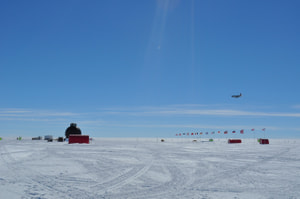 Panoramic view of whole EGRIP camp and U.S. military cargo aircraft. The black building to the center is the main dome.
Panoramic view of whole EGRIP camp and U.S. military cargo aircraft. The black building to the center is the main dome.
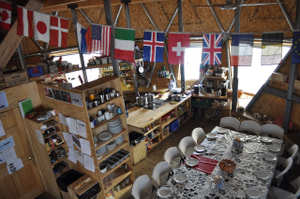 Dining area and kitchen in the main dome.
Dining area and kitchen in the main dome.
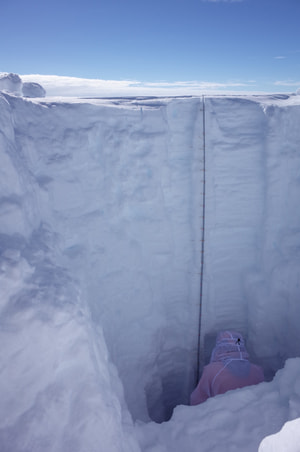 Collecting snow samples from 4m-depth snow pit.
Collecting snow samples from 4m-depth snow pit.
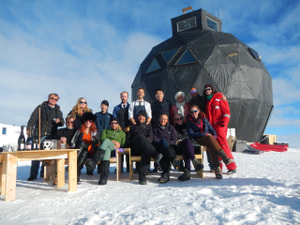 Group photo of Saturday night party
Group photo of Saturday night party
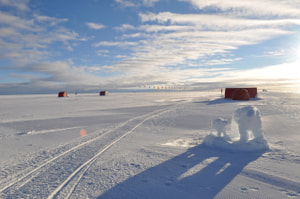 EGRIP camp under the midnight sun with a snow statue of polar bear
EGRIP camp under the midnight sun with a snow statue of polar bear




